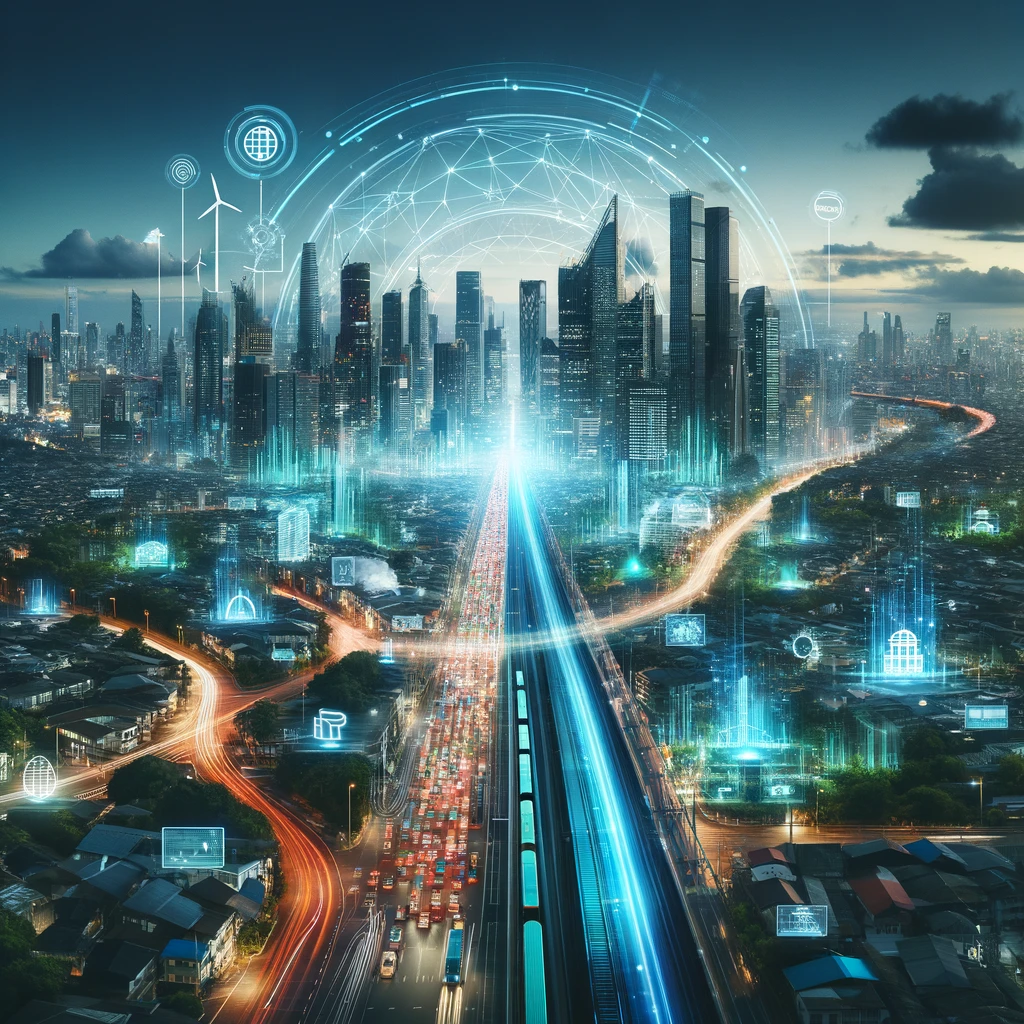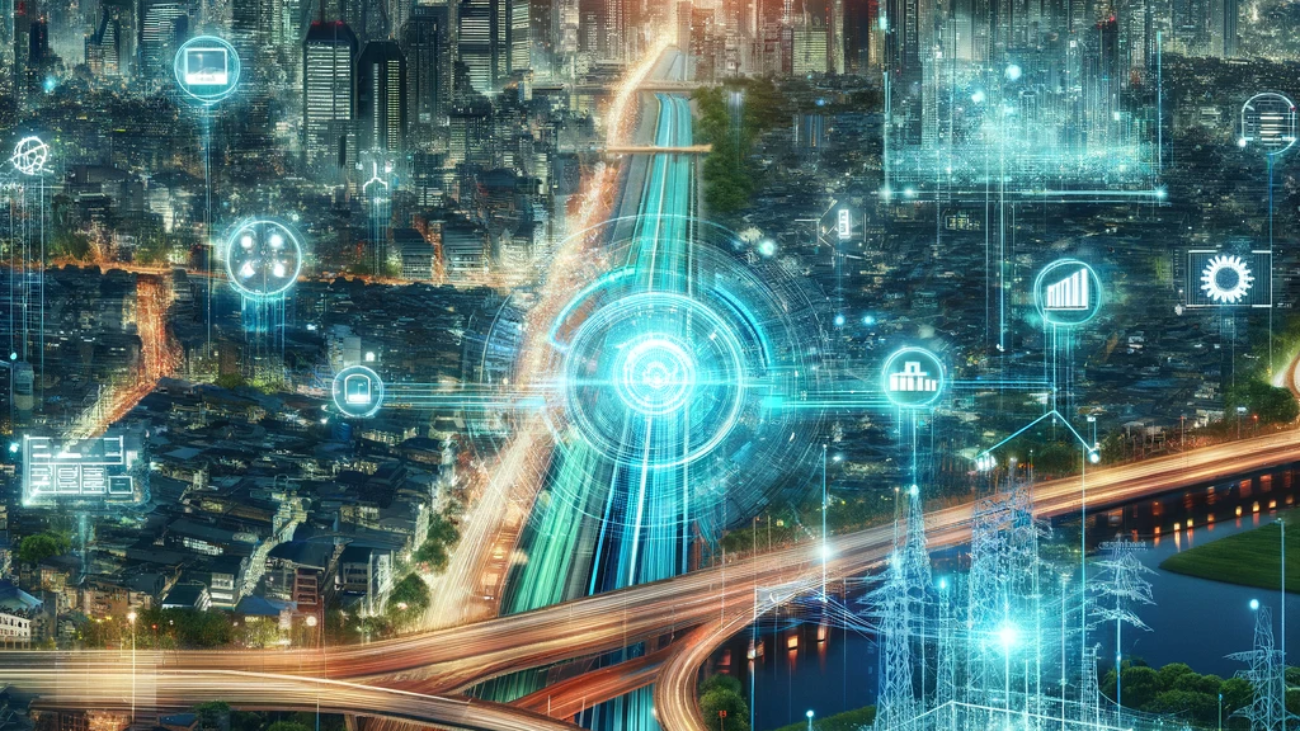In an era marked by rapid technological advancements and urban expansion, the Indian economy stands at a crucial juncture where innovative solutions are imperative for sustainable infrastructure growth. One such groundbreaking technology that holds immense promise is Digital Twin Technology. By creating precise virtual replicas of physical assets, systems, and processes, digital twins provide real-time data and simulation capabilities that can revolutionize infrastructure planning, management, and optimization. As India seeks to enhance its infrastructure to support a burgeoning population and dynamic economic activities, the integration of digital twins could be the key to unlocking unprecedented efficiency and resilience.
Digital Twin Technology offers a transformative approach to addressing the complex challenges associated with infrastructure development in India. From optimizing urban traffic flow and reducing congestion to ensuring reliable energy distribution and integrating renewable sources, digital twins enable precise monitoring and predictive maintenance, leading to significant cost savings and improved resource utilization. Moreover, by providing a virtual environment for testing and innovation, digital twins foster the development of new technologies and solutions that can drive economic growth and create new opportunities. Embracing this technology can position India as a global leader in infrastructure innovation, setting the stage for a smarter, more connected future.
The Promise of Digital Twin Technology for India’s Infrastructure
Digital Twin Technology, a cutting-edge innovation, offers transformative potential for India’s infrastructure development. By creating virtual replicas of physical assets, systems, and processes, digital twins enable real-time monitoring, simulation, and optimization. This technology is particularly valuable for a rapidly developing economy like India, where efficient and scalable infrastructure solutions are critical for sustained growth. Integrating digital twins into India’s infrastructure planning and management can lead to enhanced efficiency, reduced costs, and improved decision-making.
Key Benefits of Digital Twins for Indian Infrastructure
1. Enhancing Efficiency and Reducing Costs
Digital twins provide continuous real-time data from various infrastructure components, enabling precise monitoring and optimization. This technology has transformative potential for urban infrastructure, where city planners can leverage digital twins to manage traffic flow more effectively, optimize public transport systems, and reduce congestion. By simulating and analyzing real-time data, planners can identify bottlenecks, forecast traffic patterns, and implement solutions that lead to smoother and more efficient urban mobility. This not only enhances the quality of life for residents but also results in significant cost savings by reducing fuel consumption, lowering emissions, and minimizing wear and tear on infrastructure.
In the manufacturing sector, digital twins play a crucial role in optimizing production processes and boosting overall productivity. By creating virtual models of manufacturing equipment and processes, digital twins allow for continuous monitoring and predictive maintenance, helping to foresee potential failures and address them before they cause downtime. This proactive approach ensures that production lines run smoothly, minimizing interruptions and maximizing efficiency. Additionally, digital twins can simulate various scenarios to improve process design, streamline operations, and enhance product quality, ultimately leading to increased competitiveness and profitability for manufacturers. The integration of digital twin technology thus represents a significant step forward in achieving more sustainable and efficient industrial practices.

2. Improving Decision-Making and Planning
The ability to simulate various scenarios using digital twins is invaluable for infrastructure planning and decision-making. Urban planners, for instance, can leverage digital twins to visualize and test different designs and strategies before actual implementation. This capability ensures that the most effective and resilient solutions are chosen, reducing the risk of costly errors and enhancing the overall efficiency of urban development projects. By providing a virtual environment where potential issues can be identified and addressed proactively, digital twins help create smarter, more sustainable cities that are better equipped to handle future challenges.
For energy infrastructure, digital twins offer significant benefits by optimizing grid operations and integrating renewable energy sources more effectively. By simulating different energy distribution scenarios, digital twins enable planners to enhance efficiency, reduce waste, and ensure a stable supply of energy. This capability is particularly crucial for incorporating renewable sources like solar and wind power, which can be variable and unpredictable. Digital twins can model the impact of these sources on the grid, helping to balance supply and demand and maintain reliability. Ultimately, this improved planning and operational capability leads to better infrastructure outcomes, promoting long-term sustainability and resilience in the face of evolving energy demands.
3. Driving Innovation and Economic Growth
Digital twin technology fosters innovation by providing a virtual environment for testing and developing new solutions. This capability is crucial for sectors like smart cities, where innovative approaches to infrastructure management are essential to address the challenges of rapid urbanization. With digital twins, planners and engineers can experiment with different designs, strategies, and technologies without the risk and expense of real-world trials. This enables the identification and implementation of the most effective solutions for managing urban infrastructure, improving quality of life for residents, and making cities more resilient and sustainable.
Additionally, digital twins can support the development of new technologies and business models, driving economic growth and creating new job opportunities. By simulating real-world conditions, digital twins allow businesses to refine products and services, leading to more efficient and effective solutions. This technological advancement positions India as a leader in infrastructure innovation, attracting investment from global players and boosting economic development. Embracing digital twin technology not only enhances infrastructure planning and management but also opens up new avenues for economic prosperity, making India a hub for cutting-edge innovation and sustainable growth.
Embracing Digital Twins for a Prosperous Future
Integrating digital twin technology into India’s infrastructure development strategy is essential for achieving efficient, cost-effective, and sustainable growth. The benefits of enhanced efficiency, improved decision-making, and accelerated innovation make digital twins a powerful tool for transforming the Indian economy. By leveraging this technology, India can build resilient infrastructure that meets the needs of its growing population and drives long-term economic prosperity. Embracing digital twins today will pave the way for a smarter, more connected, and prosperous India.


Leave A Comment